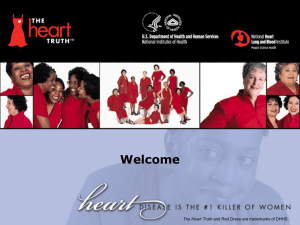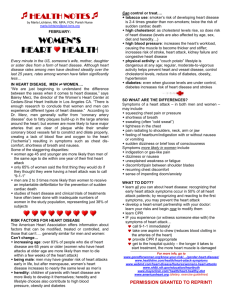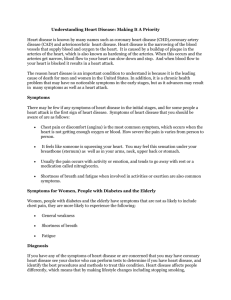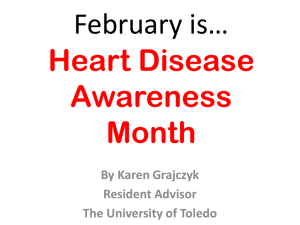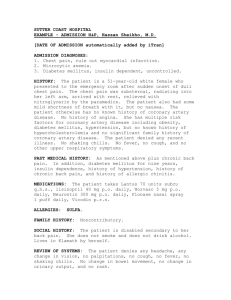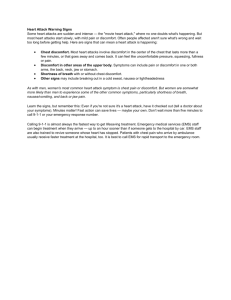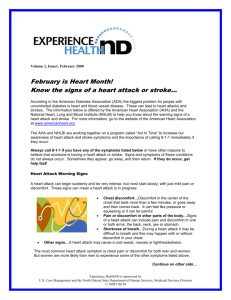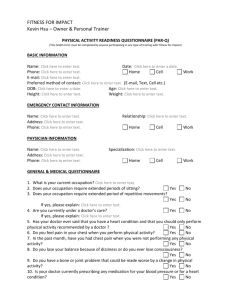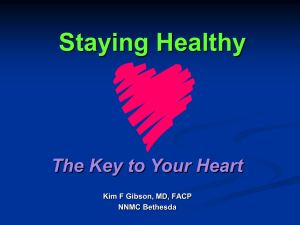Coronary Artery Disease - Catholic Medical Partners
advertisement
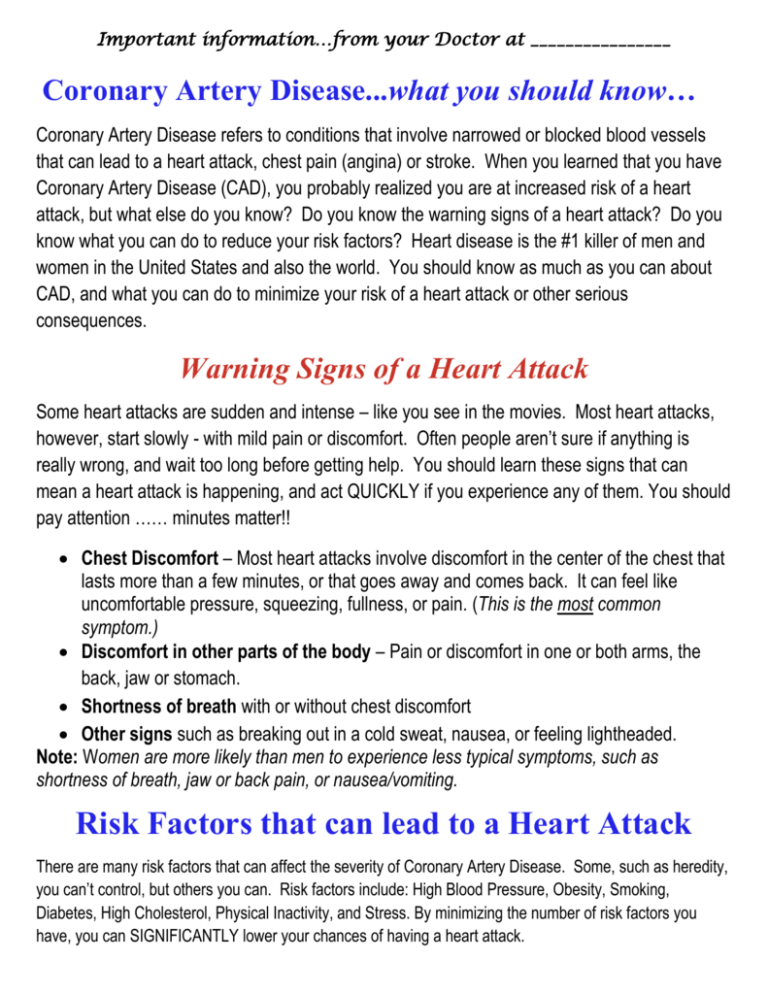
Important information…from your Doctor at ________________ Coronary Artery Disease...what you should know… Coronary Artery Disease refers to conditions that involve narrowed or blocked blood vessels that can lead to a heart attack, chest pain (angina) or stroke. When you learned that you have Coronary Artery Disease (CAD), you probably realized you are at increased risk of a heart attack, but what else do you know? Do you know the warning signs of a heart attack? Do you know what you can do to reduce your risk factors? Heart disease is the #1 killer of men and women in the United States and also the world. You should know as much as you can about CAD, and what you can do to minimize your risk of a heart attack or other serious consequences. Warning Signs of a Heart Attack Some heart attacks are sudden and intense – like you see in the movies. Most heart attacks, however, start slowly - with mild pain or discomfort. Often people aren’t sure if anything is really wrong, and wait too long before getting help. You should learn these signs that can mean a heart attack is happening, and act QUICKLY if you experience any of them. You should pay attention …… minutes matter!! Chest Discomfort – Most heart attacks involve discomfort in the center of the chest that lasts more than a few minutes, or that goes away and comes back. It can feel like uncomfortable pressure, squeezing, fullness, or pain. (This is the most common symptom.) Discomfort in other parts of the body – Pain or discomfort in one or both arms, the back, jaw or stomach. Shortness of breath with or without chest discomfort Other signs such as breaking out in a cold sweat, nausea, or feeling lightheaded. Note: Women are more likely than men to experience less typical symptoms, such as shortness of breath, jaw or back pain, or nausea/vomiting. Risk Factors that can lead to a Heart Attack There are many risk factors that can affect the severity of Coronary Artery Disease. Some, such as heredity, you can’t control, but others you can. Risk factors include: High Blood Pressure, Obesity, Smoking, Diabetes, High Cholesterol, Physical Inactivity, and Stress. By minimizing the number of risk factors you have, you can SIGNIFICANTLY lower your chances of having a heart attack. What YOU can do to control your Risk Factors… Take any medications as prescribed – If your doctor has prescribed any medications to control Blood Pressure, Diabetes, Cholesterol, etc., make sure to take them as prescribed. Also, get all lab tests as recommended to help monitor results and effectiveness. Eat healthier – A healthy diet is one of the best weapons you have to fight cardiovascular disease. The food you eat (and the amount) affects several controllable risk factors – cholesterol, blood pressure, diabetes, and obesity. There are nutrition classes and counselors available throughout the community to help. Monitor Yourself - If you have high Blood Pressure, Obesity, or Diabetes, check your blood pressure, glucose levels or weight as recommended. Keep a log of the results for yourself and show to your doctor. This will help you know if you are at or near your goal(s) and alert your doctor if you might need any medication adjustments. Also, know your goals and strive for them: Blood Pressure: <130/80; Body Mass Index (BMI): <30; Cholesterol: LDL<100, HDL >40 , ; for diabetics - HgbA1c <7%. Quit Smoking – You probably already know that smoking is associated with an increased risk of cardiovascular disease, cancer, and stroke. The risk of developing CAD is 2-4 times higher in smokers than in nonsmokers. Resources to help quit include medications, classes, counselors and the NYS Smoker’s Quitline (1-866-697-8487). It may take several attempts, but remember…it’s never too late to quit! Exercise – Physical activity can help control blood cholesterol, diabetes, blood pressure, and obesity. The more vigorous the activity, the greater the benefits. However, even moderate activity, such as walking, can help if done regularly. Numerous resources and trainers are available throughout the community, and walking is free! Experts recommend the equivalent of at least 30 minutes of moderate exercise five times per week. However, ANY increase in your current level of activity will be beneficial. Talk to your provider about what you can do to reduce your risk factors. Even small changes can make a real difference! We are available to help – but it’s up to YOU! 1/10
